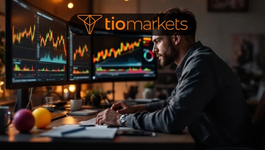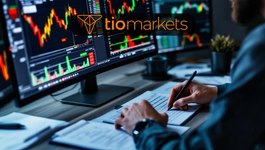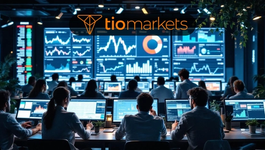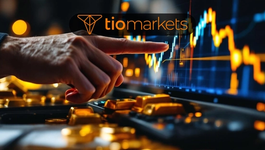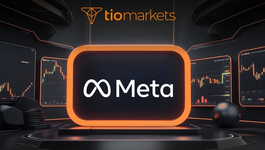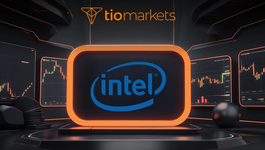What is the DAX40? DAX30 Welcomes 10 New Stocks!
BY Chris Andreou
|September 29, 2021Everything you need to know on the change from DAX30
Germany’s benchmark index, the DAX30, has now admitted 10 new stocks to its ranks in a move that will affect the industry makeup and the regulatory practices of Germany’s flagship stock index.
As of the 20th of September, the highly reputable DAX30 is now officially the DAX40, representing 40 of the country’s largest companies by market capitalisation.
Here is everything you need to know about the new DAX40 and its index constituents.
What Changed When The DAX30 Became The DAX40?
The DAX30, or the Deutscher Aktienindex, has been Germany’s flagship index since it was formed in 1988 and is one of Europe’s most popular stock indices.
The 10 new additions are expected to improve the quality of the index while providing a broader representation of Germany’s largest businesses and the overall economy.
So, What’s New in The DAX40?
Germany’s blue-chip DAX index includes the following 10 newcomers in the order of their market value:
Airbus, Zalando, Siemens Healthineers, HelloFresh, Symrise, Sartorius, Porsche Automobile Holding, Brenntag, Puma and Qiagen.
There may be small revisions to index weightings, meaning traders should understand how the new weighting and particular sector activity can impact the index overall.
The index is still fairly industry-heavy with only Zalando and HelloFresh joining Delivery Hero in the online retail section.
Siemens Healthineers, vaccine supplier Sartorius and biotech company Qiagen have all joined the health services sector. Symrise is the first DAX firm to represent the food & beverages sector.
What Else is Changing?
The index has also introduced stricter rules for a company’s eligibility to be included in the index.
Previously the DAX30 considered stock exchange turnover for its rankings, but now index members will be considered for liquidity levels instead.
This means that going forward, any new members will be required to post two years of positive earnings before interest, taxes, depreciation and amortisation “EBITDA” – not including those companies already in the DAX index.
Also, the DAX40 will now be reviewed twice a year and its constituents will be required to publish quarterly results, plus audited annual results.
In addition, companies will need to comply with the recommendations of the German Corporate Governance Code, which involves having an existing audit committee on the supervisory board.
For existing members of the index, a transitional period means compliance will be delayed until September 2022.
Why Has The DAX30 Changed to The DAX40?
According to exchange operator Deutsche Boerse, the changes in the DAX are to increase the quality of the DAX indices, provide a comprehensive picture of Germany’s largest businesses, and align the DAX indices with international standards.
The decision is thought to be in response to an accounting scandal at payment processing company and former DAX30 constituent Wirecard.
The scandal occurred in 2019, in which Wirecard – a member of the DAX30 then – was exposed by whistleblowers for accounting irregularities and fraud. The scandal naturally had a largely negative impact on investor confidence, not only in the DAX30 but across German financial markets in general.
How Will The DAX40 Impact Traders?
The expansion of the DAX40 Index means traders and investors will have an opportunity to gain greater broader exposure to the German financial markets, increased representation across industries and, as a result, DAX40 will be a better indicator of the overall German economy.
The wider DAX will therefore prove a better proxy for the German economy, as speculators can view more diversity of sectors across one index rather than two.
Traders should consider revising their fundamental analysis and research sectors with which they were previously unfamiliar as constituent companies change positions within the index.
Anyone that holds positions in the index will benefit from greater diversification in their portfolio, an important aspect of a risk management strategy. This ultimately reduces the ability of an individual company to influence the overall value of the index.
Also, the new additions have lower market capitalisations than the previous constituents, meaning the index has potential for future growth.
How Can I Trade The DAX Index With TIOmarkets?
The DAX is tradable as a single asset with TIOmarkets under the ticker DE40.
What Factors Influence The Price of The DAX?
Due to a high volume of income/export activities in today’s world, the DAX and most major indices react to factors that occur globally, such as economic news, political upheaval and even natural disasters.
Each of these factors will impact demand and supply related to import and export activities in the various sectors represented under the index, which in turn influences the price of the index as a whole.
To make informed trades on the DAX, it’s important to stay on top of economic data coming out of Germany and Europe. You will also want to pay attention to trade agreements between Europe and the rest of the world.
Pay attention to figures on job creation, unemployment, GDP and of course interest rates out of the major European states.
What Are The Best Trading Conditions?
As we’ve seen with the recent pandemic, the stock markets can be prone to large swings up or down based on economic turmoil, recovery and economic conditions.
Execution speeds: Slow order execution speeds can lead to a big difference between the price you see when you click to open a trade, and the actual price your order is opened at. This difference between prices is called “slippage”.
At TIOmarkets, we have some of the fastest execution speeds you can find, resulting in minimal slippage and more orders filled at the price you clicked.
Leverage: Normally, a large amount of starting capital is required to invest seriously in stocks and indices, because only a small amount of stocks is not likely to yield the kind of results most traders are seeking.
High leverage can greatly increase both the risk to your investment and the potential returns.
If you are comfortable with a high level of risk in return for higher potential gains, you may want to seek a leverage ratio that is commensurate to your investment goals.
Some trading educators claim that they can take advantage of large gaps in the DAX which occur over the weekends. By opening or closing positions specifically around the gap, speculators could potentially make significant gains. Find out more about one such trading strategy by visiting https://tradesforprofit.com
TIOmarkets offers exclusively consultancy-free service. The views expressed in this blog are our opinions only and made available purely for educational and marketing purposes and do NOT constitute advice or investment recommendation (and should not be considered as such) and do not in any way constitute an invitation to acquire any financial instrument or product. TIOmarkets and its affiliates and consultants are not liable for any damages that may be caused by individual comments or statements by TIOmarkets analysis and assumes no liability with respect to the completeness and correctness of the content presented. The investor is solely responsible for the risk of his/her investment decisions.
The analyzes and comments presented do not include any consideration of your personal investment objectives, financial circumstances or needs. The content has not been prepared in accordance with any legal requirements for financial analyzes and must, therefore, be viewed by the reader as marketing information. TIOmarkets prohibits duplication or publication without explicit approval. FX and CFDs are leveraged products. They are not suitable for every investor, as they carry a high risk of losing your capital. Please ensure you fully understand the risks involved.
Best pair to trade today Best stocks to trade right now Best time to trade Best time to enter a trad
Join us on social media

Experienced independent trader
Related Posts
